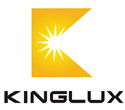What is the difference between full cutoff and fully shielded?
The term full cutoff has and is being used to describe luminaires that have no direct uplight (no light emitted above horizontal). However, in addition to that limitation, the Illuminating Engineering Society of North America (IESNA) definition also requires luminaires to comply with the glare requirement limiting intensity of light from the luminaire in the region between 80° and 90°.
The term full cutoff is often substituted for the term fully shielded. The terms are not equivalent. Fully shielded luminaires emit no direct uplight, but have no limitation on the intensity in the region between 80° and 90°. Luminaires that fall under the IESNA full cutoff, cutoff, semicutoff, and noncutoff definitions, may also qualify as fully shielded. It may be obvious that a luminaire that is characterized as an IESNA full cutoff luminaire is fully shielded, but not as obvious when luminaires with other IESNA classifications may also qualify. Consider a semicutoff luminaire containing a 1000 lumen lamp that has no direct uplight but a candela value of 150 between 80° and 90°. This luminaire is considered to be fully shielded. However, if it were mistakenly labeled a full cutoff luminaire, this can become quite confusing. In 2002, the IESNA chartered a new committee to address the inconsistencies and confusion.
There is also a confusing assumption that a luminaire with a flat lens qualifies as a full cutoff luminaire. While this may be true sometimes, it is not always the case. Depending on the structure of the luminaire, reflections off the housing may result in some amount of direct uplight from the luminaire. Consider the hypothetical luminaire in Figure 14. Reflections from below the lens may result in some direct uplight from the luminaire. The IESNA full cutoff classification also has a limitation on light in the glare zone between 80° and 90°. A flat lens on a luminaire does not guarantee that this requirement is met.
|
Figure 14. Example of a flat lens luminaire that may have some uplight reflected from the mechanical structures below the lens
|

|
|


